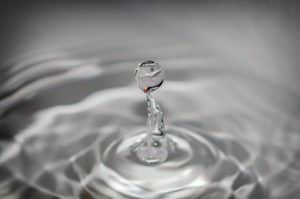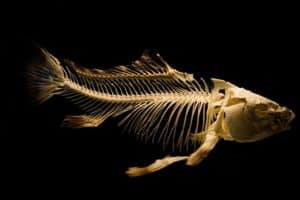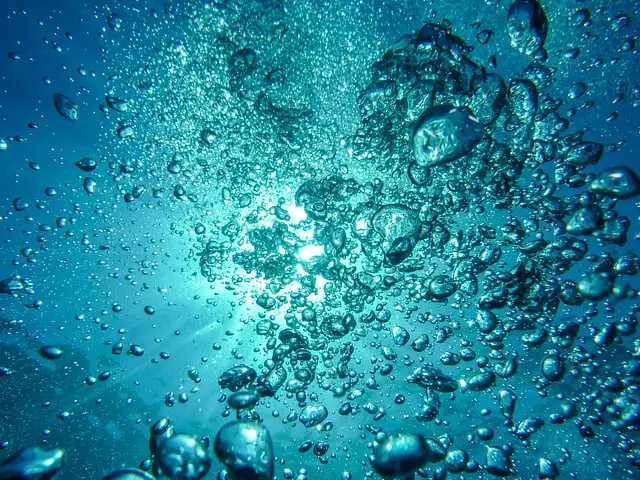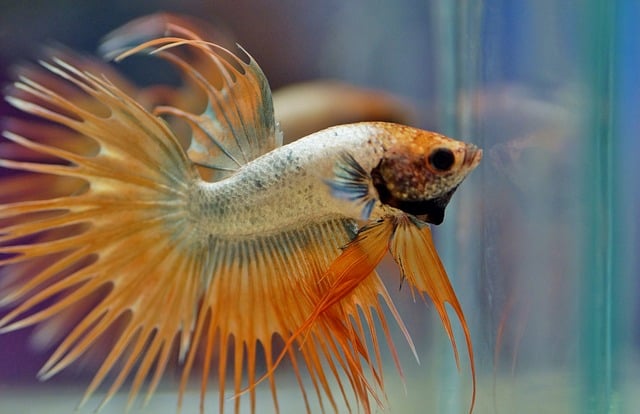One of the most heartbreaking things in the fish keeping hobby is when your pet fish dies. It’s especially hard when what seems to be healthy happy fish just die for no apparent reason. Right now, you may be curious as to why this happens, especially after cleaning the tank?
Fish die after a tank has been cleaned because too much of the cycled water has been removed. Fish will also die after cleaning a tank because of the drastic temperature change. It will put them into a state of shock which can be enough to kill them. Fish can also die after a tank cleaning if the new water added is not treated properly or if the temperature is very different from the tank’s water.
There will always be times when a young fish just dies for no reason, however, most of the time the cause is something that could have been prevented. Cleaning a fish tank can be one of those causes if you don’t fully understand what happens based on how much water you take out of the aquarium.
Doing Too Much at Once Cleaning a Fish Tank Can Kill Fish
Of course, the objective when cleaning an aquarium is to do so in a way that leaves the tank just the way you want it and the fish happy and healthy.
I feel the biggest mistake especially with newer aquarium hobbyists is doing too much at once.
Too much at once would be cleaning the filtration, vacuuming the substrate (water change) and scrubbing down the inside glass/acrylic on the tank. Doing all of this ultimately cleans out too much beneficial bacteria when you rinse out the filters sponge and vacuum the substrate.
When you are vacuuming the substrate, you are performing a water change and if you take too much water out you are removing cycled water. The replacement water might be treated to be safe for the tank, but it’s not cycled yet.
When you scrub down the inside of the aquarium, you are scrubbing away any beneficial bacteria that might be clinging onto the glass or decorations.
By doing all of this, you are also stirring things up in the tank and sometimes when you do that something triggers the fish to assert dominance which can lead to them terrorizing weaker fish. Some fish can go into shock just because of the trauma they go through from you poking around in the tank.
On top of all of that you might be taking too much oxygen out of the tank if your water change is 50% or more.
So, what do you do? Keep reading to find out.

How to Clean Your Fish Tank So You Don’t Kill the Fish
As you can see from the last section, doing too much at once can end up killing some fish. Of course, we want to avoid that so what should you do? Here’s what I do.
- I perform a water change every week. Every weekend I vacuum out the substrate therefore performing a water change. The amount of water I take out each time differs. If I take out more than 30% of the water, I do not touch the filter.
-
- The more water you take out via vacuuming substrate means you are taking out more beneficial bacteria and oxygen which resides in the water.
- I try to stick to 25% of the water each weekend however once every couple of months I take out approximately 50% of the water.
- I never take out more than 50% of the water. I feel this would be too much of a change in the water chemistry ultimately leading to some of my fish dying.
- I make sure whatever water I am putting back into the aquarium has been treated and sitting out for at least 24hours. I want the water to be room temperature at minimum. I treat it with a water conditioner that gets rid of chlorine and other harmful components of tap water.
- I clean my filter out about once every 6 weeks or so. Your filter does not need to be cleaned every week nor every 2nd or 3rd week for that matter. Companies that sell the filter medium will tell you to change sponges and charcoal every two to four weeks. It’s just not necessary.
-
- When you do clean your filter sponge, don’t throw it away and replace with a new one unless the sponge is falling apart. There is an abundance of beneficial bacteria in your filter sponge. Rinse it out in some of the water you just vacuumed out of the tank and put it back.
- If you are using charcoal, you don’t really rinse these out. Every two months or more feel free to replace it with a new one.
- **IMPORTANT** Only clean your filter when your water change is 25% or less. Anymore than that and you are risking killing some of your fish.
- I clean the inside glass of my tanks every week. If there are any decorations that need a scrubbing, I do them whenever I feel like it. I think as long as you have your water change and filter cleaning schedule under control, you can do these any time.
- I clean my glass for aesthetics and want to be able to see my pet fish. I don’t want bacteria growing and obstructing my view.
- I always turn on an air stone after I refill the tank with water. I want to get some oxygen back in the water ASAP.
-
- Doing this not only provides instant air via the air stone, it agitates the surface so that any existing CO2 in the tank will rise to the surface and exchange with oxygen. This does wonders for your fish and should be something you strive to happen daily as far as surface agitation goes.

If a Fish Dies Should You Change the Water?
On the other side of the coin if a fish dies should you change the water?
I do have a thorough article that answers this question which can be found HERE.
What I will say here is it depends on the situation. You might want to vacuum the substrate where the dead fish was laying.
If the dead fish was sucked up against a filter inlet, then cleaning out the filter might be inline.
Go check out my article on this topic once you are done here.
How to Save Dying Fish after Water Change
Unfortunately, it is really hard for me to tell you what you need to do, unless I am there with you when you perform your water change.
As well the bad news is that most fish that are affected when a tank has been cleaned is probably not healthy enough to survive anyways.
If you see your fish looking distressed, you can try a couple of things.
- Turning the lights off and adding an air stone will help lower the fish’s stress as well the air stone helps to introduce oxygen into the water which might be enough to help the fish survive.
- If you have a sick tank operational, now is the time to get those sick looking fish into that tank. The water in the sick tank should be cycled and kept at the same water temperature as the non sick tank.
You could try medications, but in my experience it’s usually too late. That being said, if you have a sick tank, make sure to add medication if it looks like it’s warranted.
Conclusion
In conclusion, I just want to point out the importance of staggering the work you do on your aquarium when it comes to water changes and cleaning. The environment you are playing with is the life source of the fish you have chosen to bring home as pets.
Having water prepped and ready for the water changes is very important. I know some hobbyists don’t do this and they feel it is not important. This is misleading, however, to new aquarium owners as some fish might do fine with tap to tank. Most fish will have a hard time with tap water and might not survive to the next tank cleaning.
Related Aquariums at Home Articles
How do you cycle an aquarium – The Nitrogen Cycle
How To Get Rid Of Aquarium Algae – Types Of Algae
How Often Should You Clean Your Aquarium Filter






